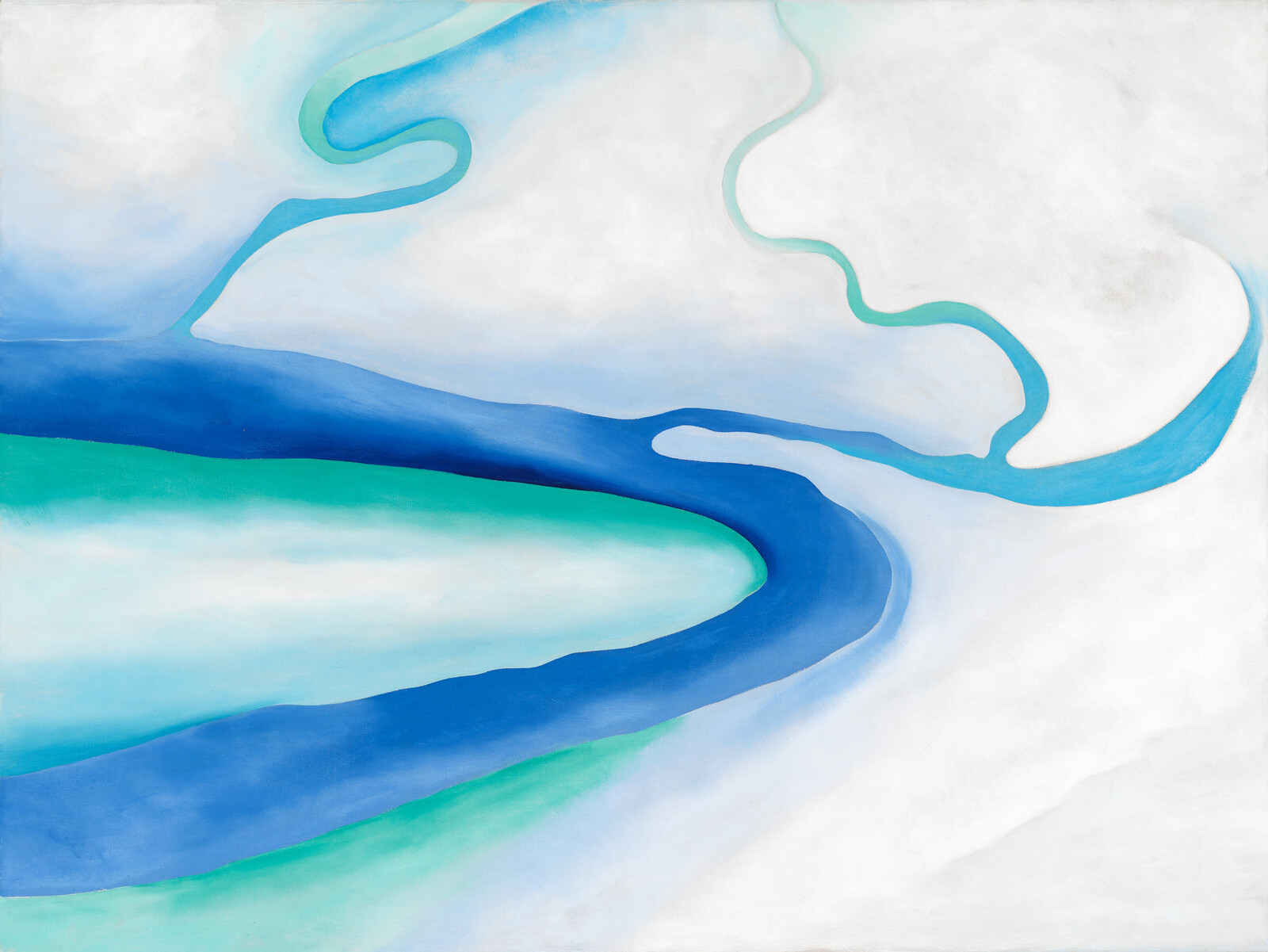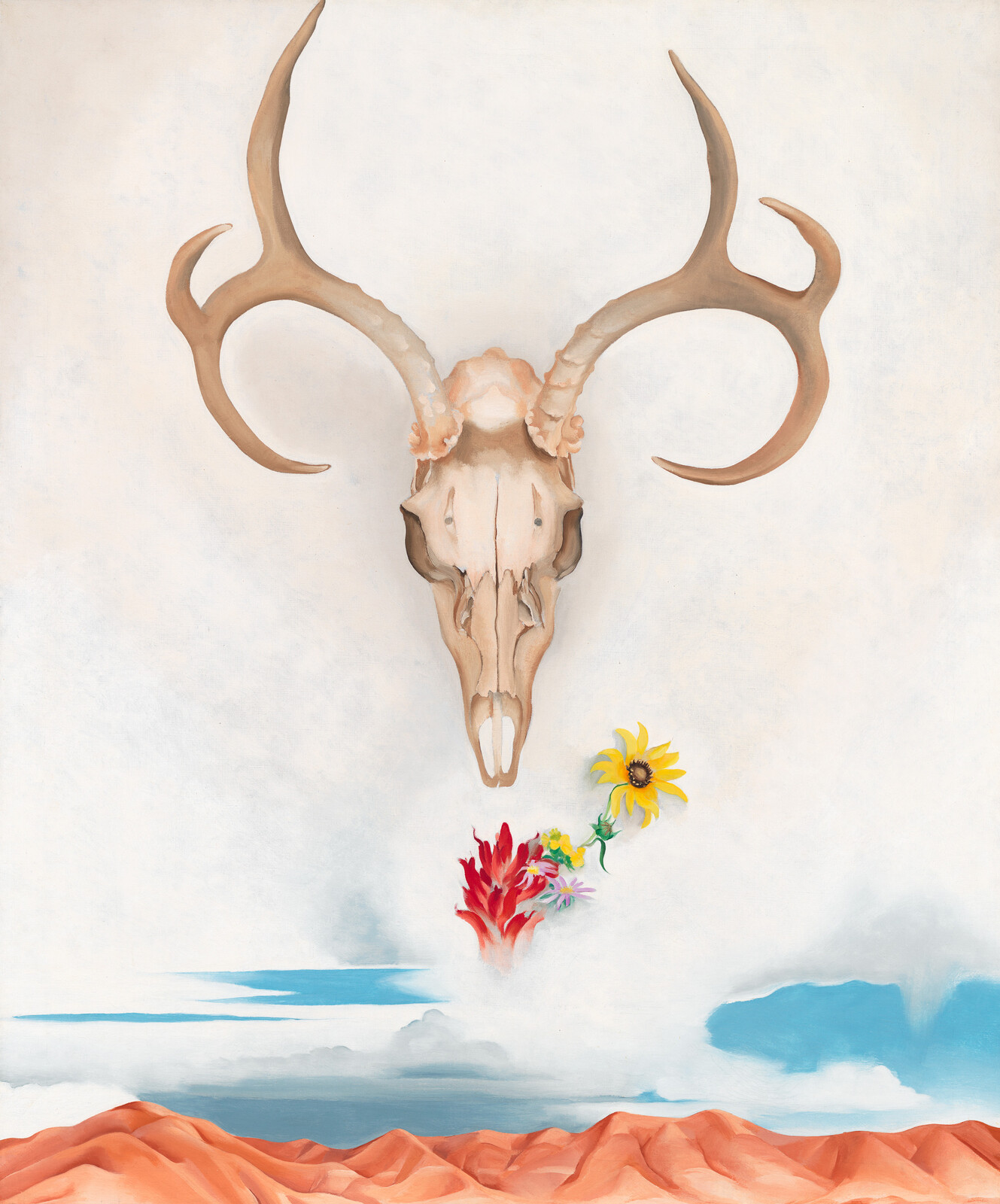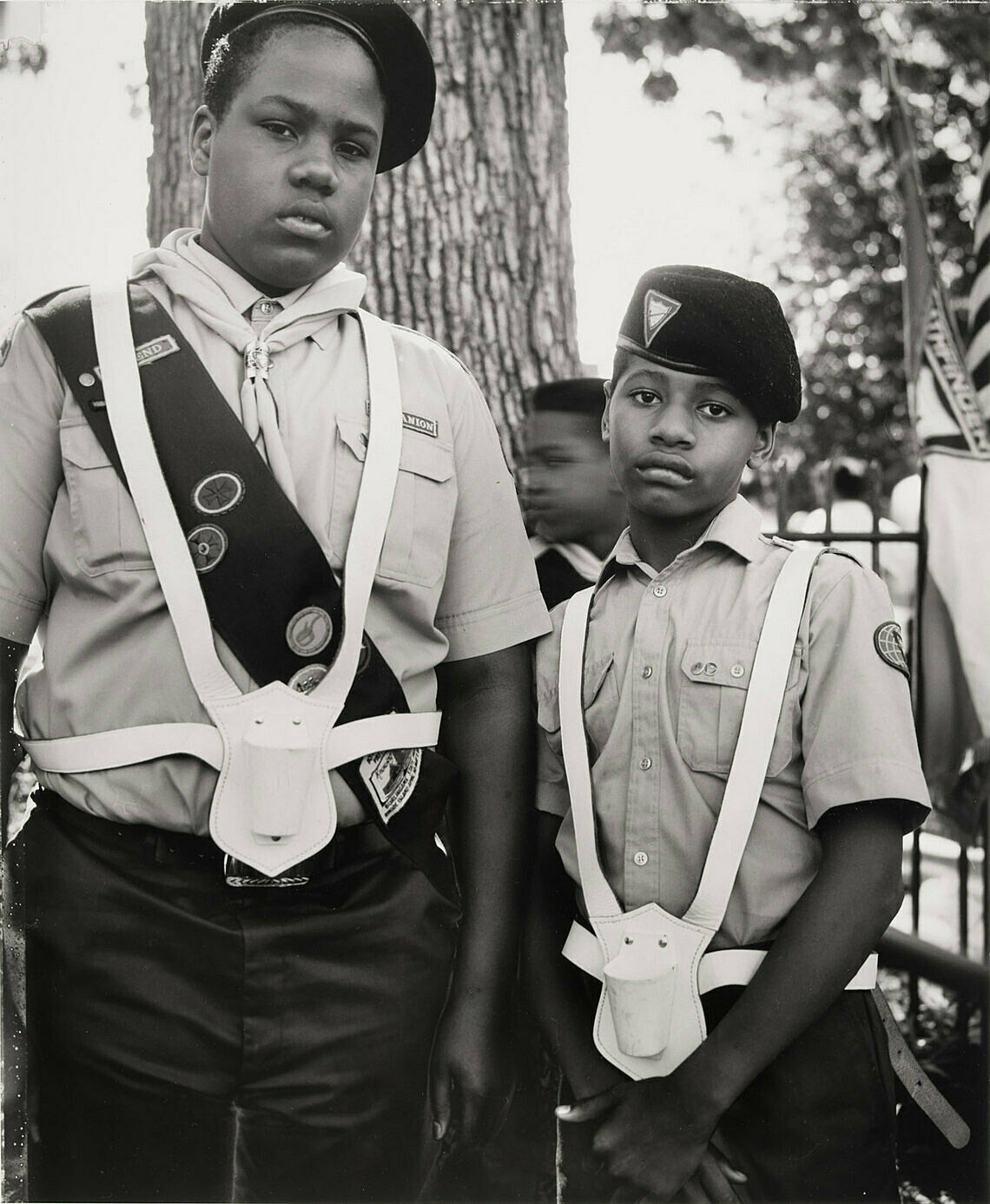Georgia O’Keeffe, Summer Days, 1936
Oct 12, 2016
0:00
Georgia O’Keeffe, Summer Days, 1936
0:00
Melanie Adsit: This is a very different kind of portrait than the portraits we've been looking at, so far. Do you consider this to be a portrait?
Student: I think it's a portrait because a portrait doesn't have to be, actually accurate. It could be anything, as long as it represents someone, some place, something, some idea, an image.
Melanie Adsit: What symbols do we see in this painting? What do you think they might represent?
Student: This is a place of mountains and desert. The skull is like in the sky, which means they passed away.
Student: I, totally agree with that. It's really high rocks, or small mountains, or jagged hills. It represents the hardness, the challenging, the viciousness of where they live, or what's around them. The flowers are rest in peace and there's always hope. Even in the barrenness of desert, there’s always life.
Melanie Adsit: I love the way that you guys are talking about this, in terms of symbols of life and death. This artist's name was Georgia O'Keeffe. She lived here in New York, but she traveled to New Mexico every summer. She loved the landscape in New Mexico, and would collect things when she was out there. Not only would she collect flowers, she would also collect bones and skulls. She said that sometimes the bones were strangely more living than the animals walking around.
Student: This skull has a huge soul, as a huge representation. It's part of a big soul of the desert of New Mexico. It lives in soul, spirit, in our minds, and in our memories, instead of living through flesh and blood.
In Human Interest (Kids).



